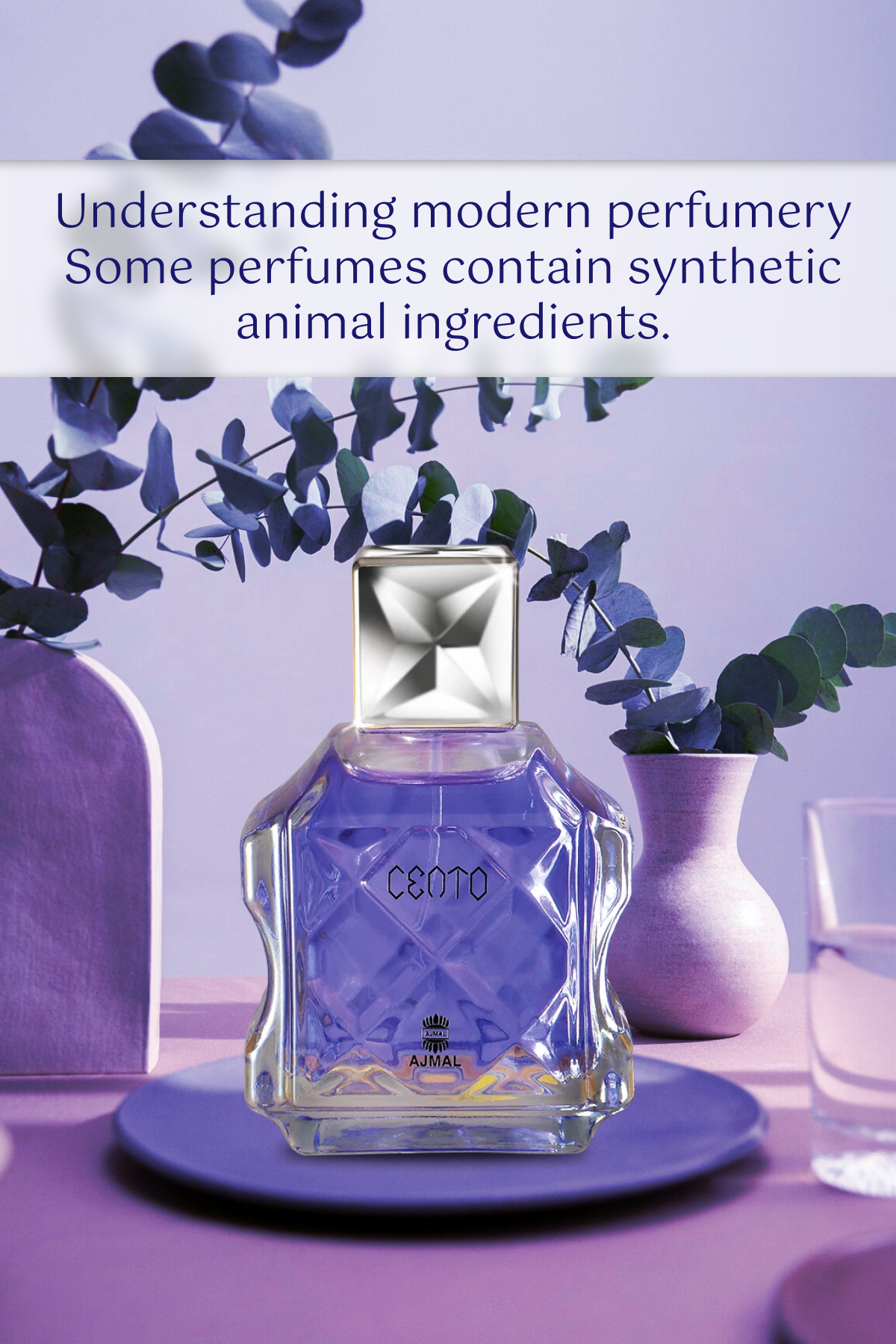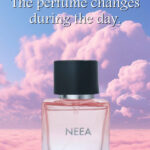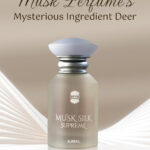Perfume is an art form that has progressed tremendously throughout the years, combining science, nature, and imagination to create enchanting aromas. One of the most fascinating characteristics of contemporary fragrance is the use of synthetic animal components.
Historically, perfumes frequently incorporated natural animal-derived ingredients that provided depth and longevity to fragrances. However, ethical concerns and advances in chemistry have resulted in the creation of synthetic substitutes. This blog post delves into the world of synthetic animal substances in perfumery, including their history, motives for use, and the ethical and practical ramifications.
Animal Ingredients in Perfumery: A History and Traditional Uses
Historically, some of the most valuable substances in perfumery were obtained from animals. They included:
Musk: Obtained from the glands of the musk deer, musk was known for its warm, seductive perfume and ability to fix other aromas, allowing them to remain longer.
Civet: This ingredient, extracted from the civet cat’s glands, gave perfumes a deep, musky aroma.
Ambergris: Produced in the digestive system of sperm whales, ambergris had a pleasant, earthy perfume and was highly coveted for its scarcity and complexity.
Castoreum: Castoreum, derived from beaver castor sacs, adds a leathery, smoky character to scents.
These ingredients were not only rare and expensive, but they also aroused ethical questions about animal welfare, pushing perfumers to explore alternatives such as candle fragrance oils and plant-based materials to replicate similar olfactory effects.
The Transition to Synthetic Alternatives
With the development of modern chemistry and increased awareness of animal rights, the perfume business began to look for replacements to animal-based components. The creation of synthetic compounds capable of replicating the aroma and qualities of natural animal substances was a significant achievement. These synthetics provided numerous advantages:
Ethical: They removed the necessity for animal exploitation.
Consistent: They delivered a stable and consistent quality, free of the unpredictability observed in natural sources.
Cost-effective: They were frequently less expensive to make and could be manufactured in bigger quantities.
Understanding Synthetic Animal Ingredients.
What Are the Synthetic Animal Ingredients?
Synthetic animal components are molecules manufactured in a laboratory to have the same aroma and qualities as their natural counterparts. These ingredients are designed to have the same depth, warmth, and complexity as natural animal compounds, but without the ethical and environmental implications.
Common Synthetic Animal Ingredients:
Synthetic Musk: Perhaps the most well-known synthetic animal ingredient, synthetic musk is available in a variety of forms, including nitro, polycyclic, and macrocyclic musks. Many modern scents contain these chemicals, which recreate the rich, sensuous aroma of genuine musk.
Synthetic Civet: Synthetic civet is designed to simulate the musky, slightly fecal aroma of natural civet, giving scents a deep, animalistic feel.
Synthetic ambergris: This synthetic, sometimes known as ambroxan or ambroxide, simulates the sweet, sea, and earthy notes found in natural ambergris.
Synthetic Castoreum: Used to mimic the leathery, smokey scent of natural castoreum, synthetic castoreum is frequently used in leather and oriental scents.
The Science of Synthetic Ingredients
The production of synthetic animal components necessitates complicated chemical procedures. Chemists study the molecular structure of natural substances before creating analogous chemicals in the laboratory. This method not only mimics the aroma but also allows for changes to improve specific attributes, such as longevity or intensity.
Why use synthetic animal ingredients?
Ethical considerations
The use of synthetic substances tackles several serious ethical concerns. Perfumers may produce beautiful fragrances without using animal-derived ingredients. This move is consistent with the increased customer demand for cruelty-free and vegan products.
Environmental Impact
Harvesting natural animal ingredients frequently disrupts ecosystems and wildlife populations. Synthetic alternatives serve to alleviate these environmental consequences by eliminating the need for wildlife exploitation and habitat loss.
Consistency and Quality Control.
Natural animal ingredients might vary in quality and fragrance character according on the animal’s diet, habitat, and health status. In contrast, synthetic components provide consistent quality and predictable aroma profiles, guaranteeing that each bottle of perfume smells exactly as intended.
Innovation and Creativity
Synthetic chemicals give perfumers a larger range of scents to work with. They can try out novel combinations and create perfumes that would be impossible to obtain using natural substances alone. This provides new opportunities for creativity and innovation in perfumery.
Ethical and practical implications
The emergence of vegan and cruelty-free perfumes
The transition to synthetic animal products has created a thriving market for vegan and cruelty-free perfumes. Many consumers are now looking for products that reflect their ethical ideals, and perfumers are responding by developing perfumes that are both luxurious and responsibly manufactured.
Transparency and Labeling
As consumers become more aware of the chemicals in their products, transparency in labeling becomes increasingly vital. Perfume companies are now more likely to disclose the usage of synthetic components and emphasize their dedication to ethical standards.
Regulatory considerations
Additionally, the influence of musk perfume history has been significant in the evolution of fragrance formulations, including Chypre perfumes. Musk, originally derived from the gland of a musk deer, has been a key component in many iconic perfumes. However, as the industry has moved toward ethical practices, synthetic musk compounds are now used to replicate the same sensual base note without harming animals.
Conclusion
The use of synthetic animal elements in perfumery is a perfect balance of tradition, science, and ethics. These components enable perfumers to create rich, nuanced aromas that honor the traditions of traditional perfumery while also embracing modern principles such as sustainability and cruelty-free procedures.
Understanding and respecting the function of synthetic animal components enables customers to make educated decisions and enjoy the art of smell with a clear conscience. The future of fragrance lies in striking a careful balance between innovation and tradition, beauty and responsibility.













